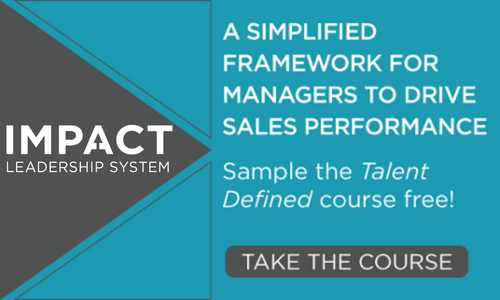
As a sales manager, imagine how much better your life would be if you were consistently able to:
- Forecast with better accuracy
- Improve the sales performance of your team
These elements are important, and delivering one or the other is not an option. When you have a healthy sales pipeline that is regularly monitored, both can be easy to achieve.
Avoid the Activity Micromanagement Trap
While clarity on performance tracking, leading indicators, and individual expectations enable sales organizations to achieve successful outcomes, they don’t guarantee it. If sales managers only focus on these three things and neglect their sales pipeline, they can be blindsided by the micromanagement on activity.
This is not to say activity is unimportant, it is. However, simply monitoring activity can create activity for the sake of activity. The goal is not to just drive activity, but to drive productive activity and that means monitoring activity and the sales pipeline.
Simply put, activity plus pipeline management produces better outcomes. The best sales leaders focus more on the strength of their pipeline than just managing activity. How about you?
The Sales Funnel
A sales pipeline is also referred to as a sales funnel. It's best to have prospects in each of these areas listed below and sellers engaged in these sales activities:
- Top of the funnel—early in the sales process when sellers are identifying and connecting with prospects
- Middle of the funnel—sellers discovering problems and opportunities as well as advising
- Bottom of the funnel—closing the deals
A healthy pipeline or sales funnel should not be a mishmash of random customers and prospects. The best sellers and managers are very strategic about their pipelines and focus mainly on activities with the biggest customers—key accounts—and best prospects—target accounts. Additionally, top performers will have a nice distribution of accounts at the three stages of the funnel.
Having a disproportionate number of accounts in one of these stages often leads to a rollercoaster of business development where a good month or quarter if followed by a poor month or quarter. A good rule of thumb is, nothing at the top of the funnel today usually means nothing to close in the future and missed sales goals.
At The Center for Sales Strategy (CSS), we use a CRM and sales funnel from HubSpot. As a seller, that visibility allows me to look at my pipeline and predict my future revenue and income as well as know where I need to focus my activities to build a healthy pipeline and close deals.
10 Ways to Build a Healthy Sales Pipeline
Here’s a list of ten things world-class managers do to help sellers build a healthy pipeline and improve sales performance:
1. Employ a lead generation process like inbound marketing and other thought leadership strategies to get prospects to raise their hands and ask for help and enter the top of the sales funnel.
2. Identify quality prospects considering dollar potential, access to the decision maker, and fit. Be picky and avoid throwing all prospects in the funnel. Make sure each prospect is worthy of your salesperson’s time and energy before they work to secure an appointment.
3. Sellers should communicate a valid business reason that gives prospects a reason why the prospect should want to meet them to set better appointments that will move them in the funnel. Employ a seven to ten points of contact approach over two weeks to pursue new business prospects.
4. Have sales enablement resources handy to address common objections and to move the sales process along—things like sales plays, FAQs, eBooks and case studies (video and written).
5. Listen to customers and prospects to uncover new sales opportunities.
6. Discuss specific accounts and outline specific behaviors needed to close business.
7. Make sure proposals include a clearly defined problem—desired business results—and a solution to drive ROI.
8. Regularly review how long accounts stay in the same stage of the sales process and know when to move them out of your pipeline.
9. Examine conversion rates along the sales process to see how well each seller moves accounts through the sales process. Dig into the lowest conversion rates to determine why and how you can help your salespeople improve.
10. Make sure each salesperson has a healthy mix of accounts they are starting to have conversations with (top of the funnel), accounts they are actively selling to (middle of the funnel), and accounts that are ready to close (bottom of the funnel).
Here’s a bonus tip:
Meet with top spending key accounts once per quarter to get an update on their desired business results.
The best sales leaders focus more on the strength on the pipeline — NOT the activity!
Additional Resources to Help Your Sales Pipeline:
- Where Most Sales Pipeline Problems Spring a Leak
- Are Long Sales Cycles Messing with Your Pipeline? (Part 1)
- Are Long Sales Cycles Messing with Your Pipeline? (Part 2)
- Friction Between Buyers and Sellers Persists
- The Sales Pipeline is More Important Than Sales Activity
*Editor's Note: This blog has been updated since its original post date.


